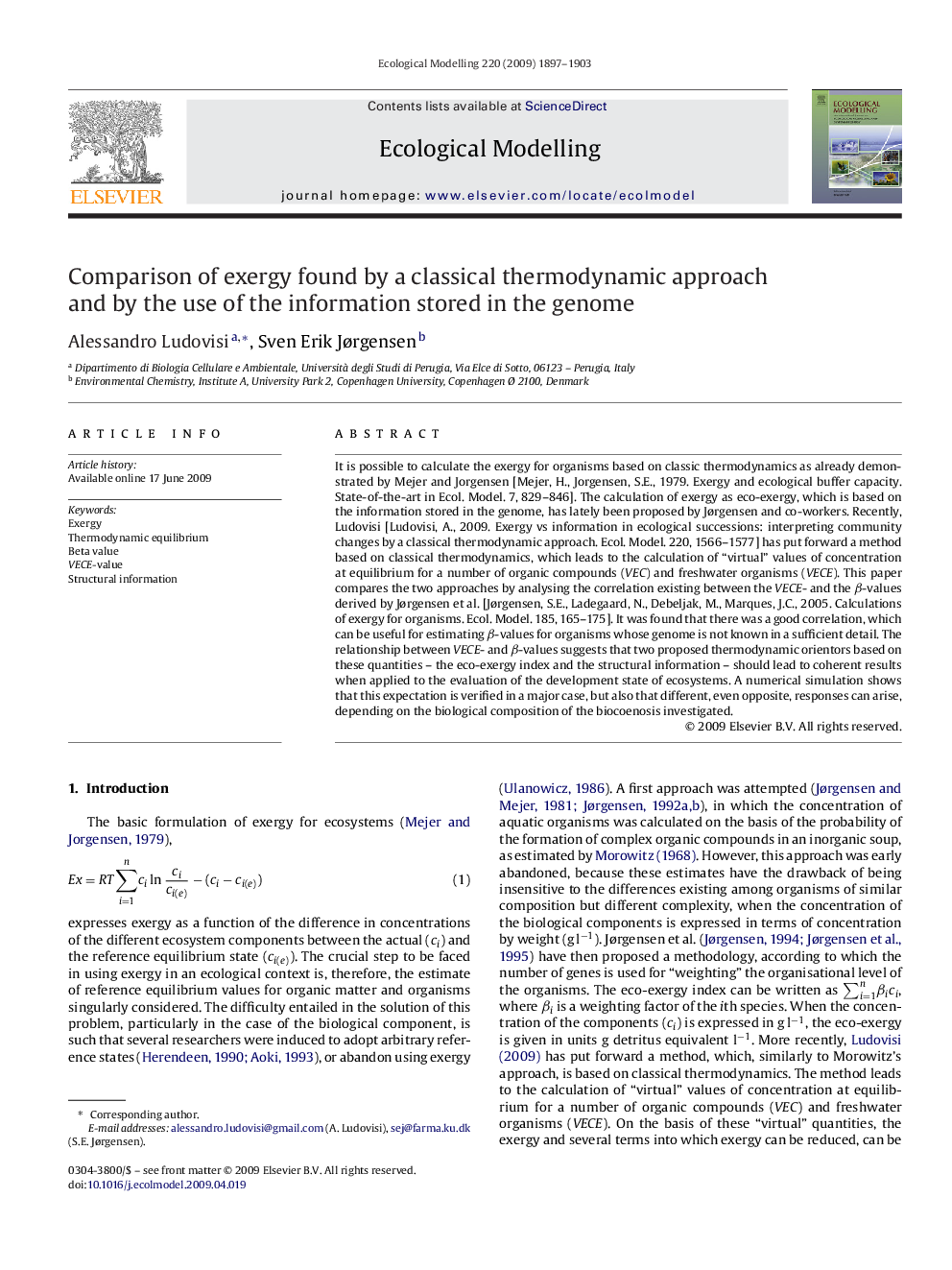| Article ID | Journal | Published Year | Pages | File Type |
|---|---|---|---|---|
| 4377861 | Ecological Modelling | 2009 | 7 Pages |
It is possible to calculate the exergy for organisms based on classic thermodynamics as already demonstrated by Mejer and Jorgensen [Mejer, H., Jorgensen, S.E., 1979. Exergy and ecological buffer capacity. State-of-the-art in Ecol. Model. 7, 829–846]. The calculation of exergy as eco-exergy, which is based on the information stored in the genome, has lately been proposed by Jørgensen and co-workers. Recently, Ludovisi [Ludovisi, A., 2009. Exergy vs information in ecological successions: interpreting community changes by a classical thermodynamic approach. Ecol. Model. 220, 1566–1577] has put forward a method based on classical thermodynamics, which leads to the calculation of “virtual” values of concentration at equilibrium for a number of organic compounds (VEC) and freshwater organisms (VECE). This paper compares the two approaches by analysing the correlation existing between the VECE- and the β-values derived by Jørgensen et al. [Jørgensen, S.E., Ladegaard, N., Debeljak, M., Marques, J.C., 2005. Calculations of exergy for organisms. Ecol. Model. 185, 165–175]. It was found that there was a good correlation, which can be useful for estimating β-values for organisms whose genome is not known in a sufficient detail. The relationship between VECE- and β-values suggests that two proposed thermodynamic orientors based on these quantities – the eco-exergy index and the structural information – should lead to coherent results when applied to the evaluation of the development state of ecosystems. A numerical simulation shows that this expectation is verified in a major case, but also that different, even opposite, responses can arise, depending on the biological composition of the biocoenosis investigated.
